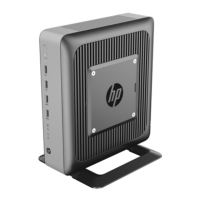Table A-1 Computer Setup—Security (continued)
Option Description
●
Key ownership (HP keys/Customer keys). Lets you change the keys of dierent owners.
Fast Boot (Enable/Disable) – Enable Fast Boot cause system boot by initializing a minimal set of devices
which is required to launch active boot option. This option has no eect for BBS boot options.
Computer Setup—Power
NOTE: Support for specic Computer Setup options may vary depending on the hardware conguration.
Table A-2 Computer Setup—Power
Option Description
OS Power Management Runtime Power Management (enable/disable) – Allows certain operating systems to reduce processor
voltage and frequency when the current software load does not require the full capabilities of the
processor. Default is enabled.
Idle Power Savings (Extended/Normal) – Extended/Normal. Allows certain operating systems to decrease
the processors power consumption when the processor is idle. Default is ‘extended’.
ACPI S3 PS2 Mouse Wake Up (enable/disable) – Enables or disables waking from S3 due to any PS2 mouse
activity or a button click only.
Hardware Power
Management
S5 Maximum Power Savings – Turns o power to all nonessential hardware when system is o to meet
EUP Lot 6 requirement of less than 0.5 Watt power usage. Default is disabled.
Thermal Fan Idle Mode – Allows you to set default fan speed in idle mode.
CPU Fan speed (Read-Only) – shows the CPU fan speed in RPM.
Computer Setup—Advanced
NOTE: Support for specic Computer Setup options may vary depending on the hardware conguration.
Table A-3 Computer Setup—Advanced (for advanced users)
Option Heading
Power-On Options Allows you to set:
●
POST messages (enable/disable) – Default is disabled.
●
Press the ESC key for Startup Menu (Displayed/Hidden).
●
After Power Loss (o/on/previous state) – Default is Power o. Set this option as follows:
—
Power o—causes the computer to remain powered o when power is restored.
—
Power on—causes the computer to power on automatically as soon as power is restored.
—
Previous state—causes the computer to power on automatically as soon as power is restored,
if it was on when power was lost.
NOTE: If you turn o power to the computer using the switch on a power strip, you will not be able to
use the suspend/sleep feature or the Remote Management features.
●
POST Delay (in seconds) – Enabling this feature will add a user-specied delay to the POST process.
This delay is sometimes needed for hard disks on some PCI cards that spin up very slowly, so slowly
that they are not ready to boot by the time POST is nished. The POST delay also gives you more
time to select F10 to enter Computer (F10) Setup. Default is ‘None’.
28 Appendix A Computer Setup (F10) Utility, BIOS Settings

